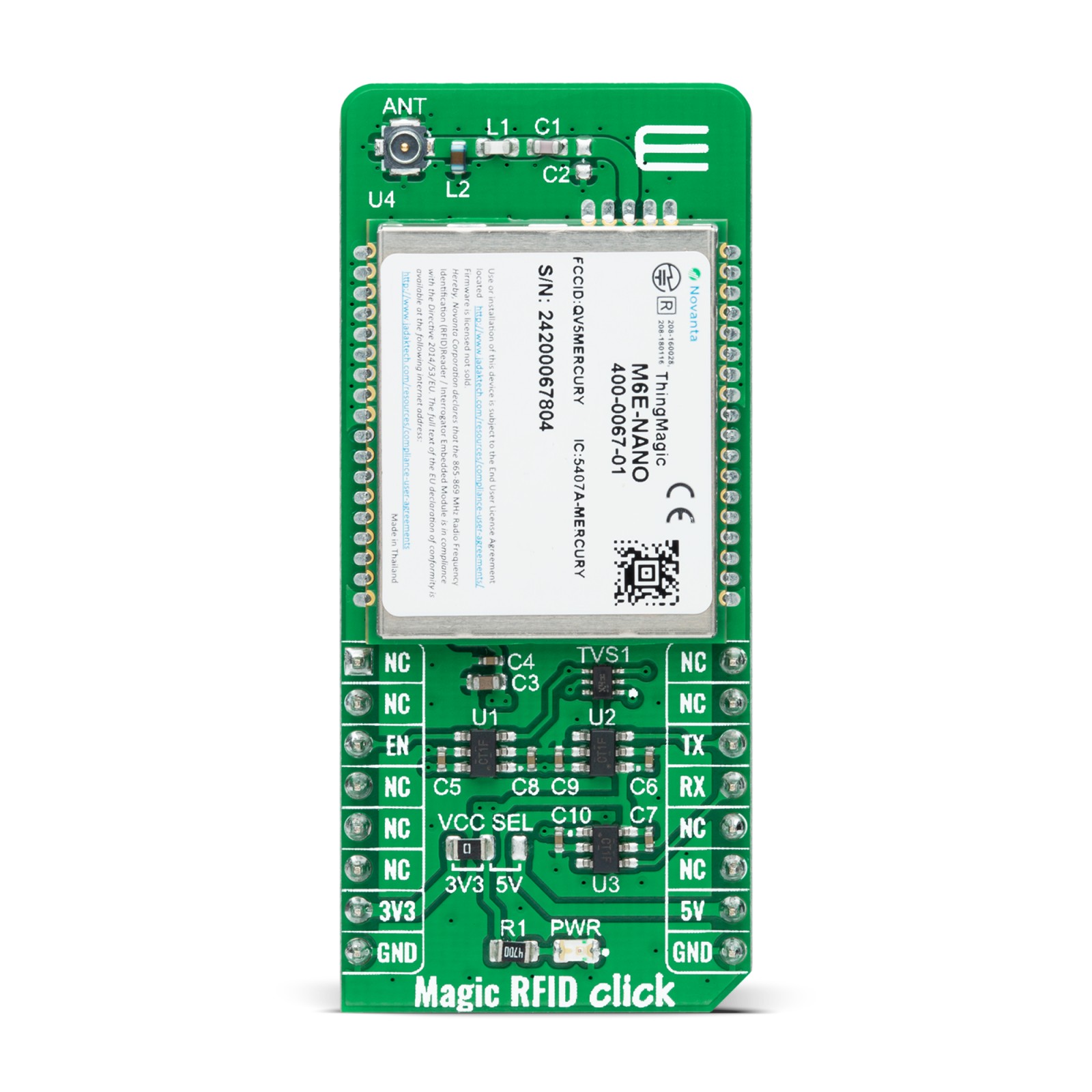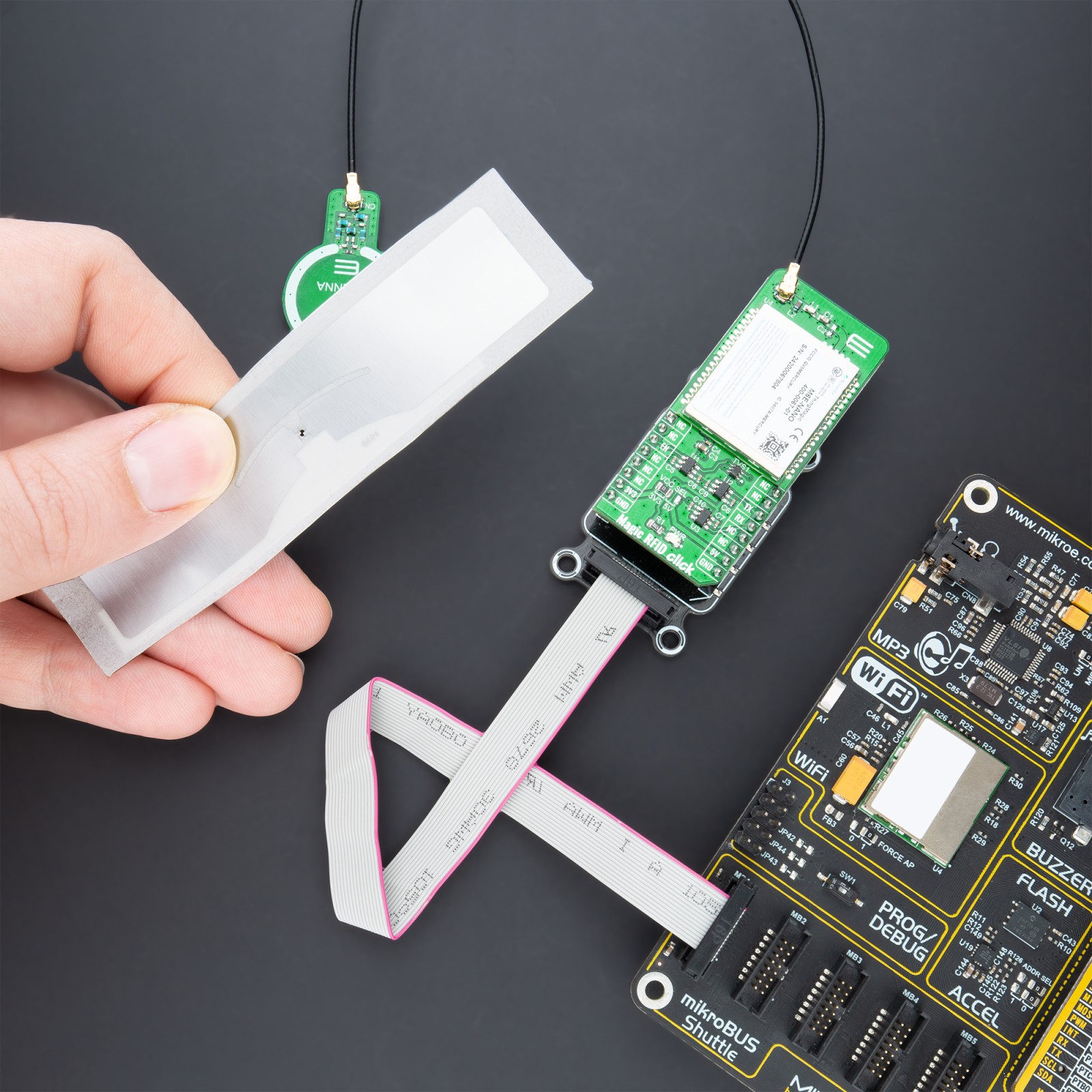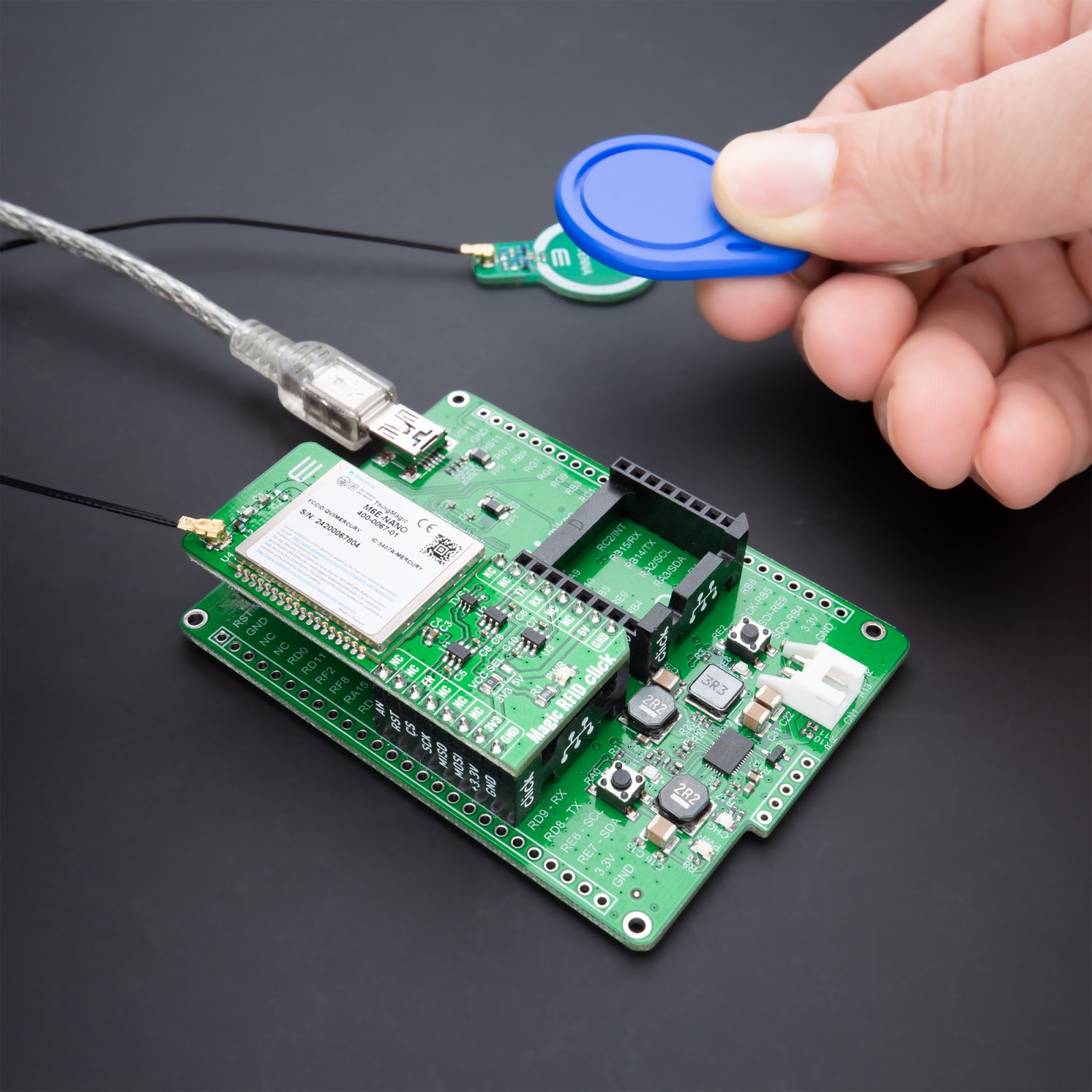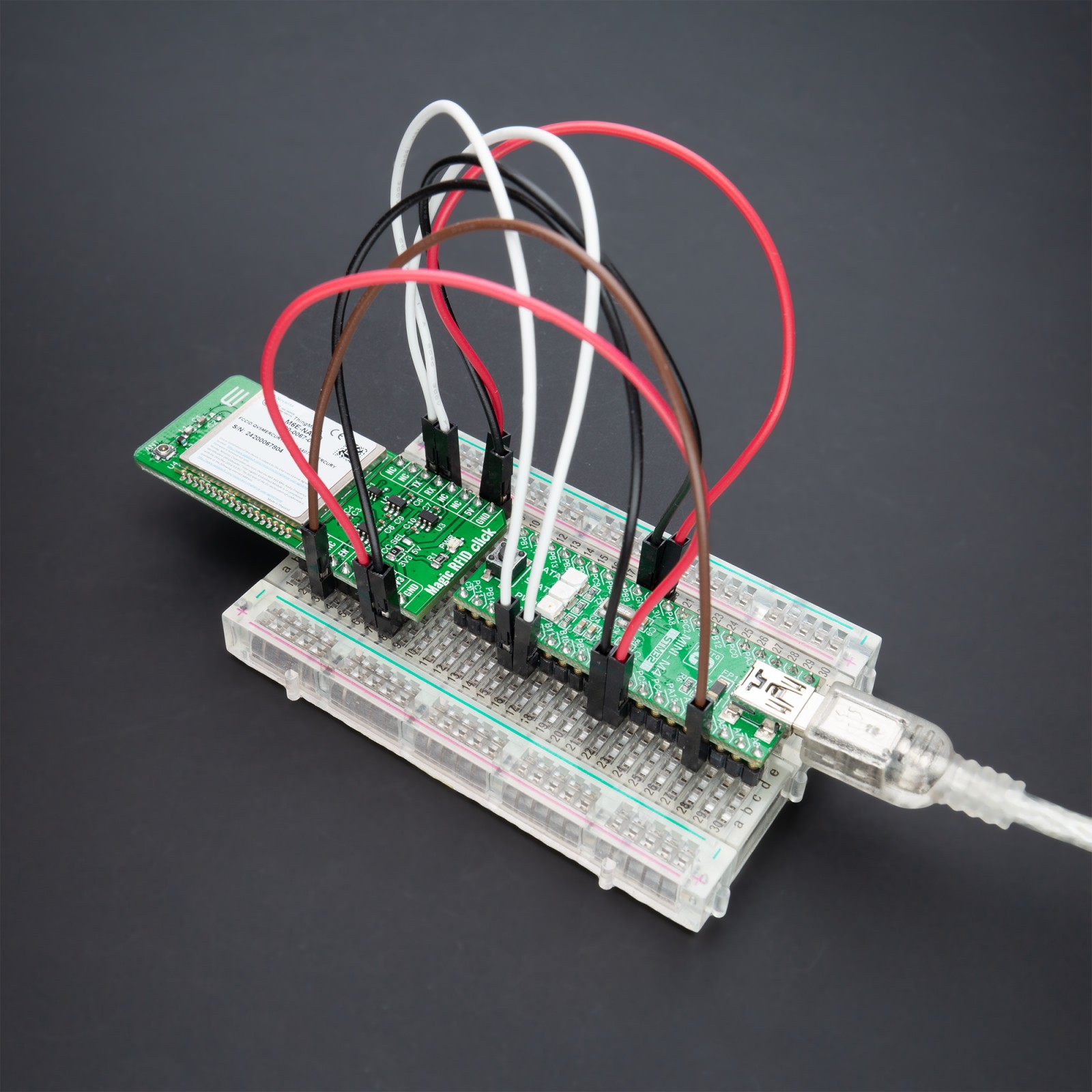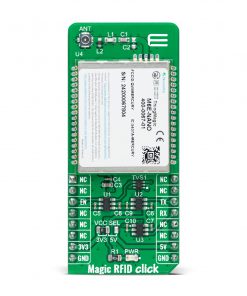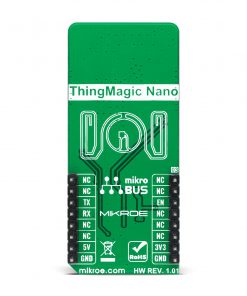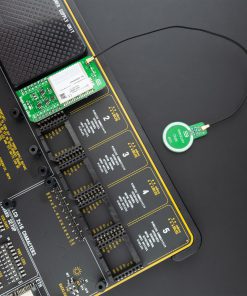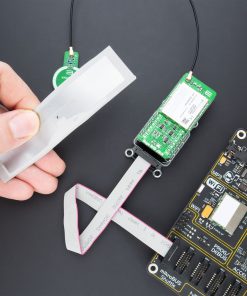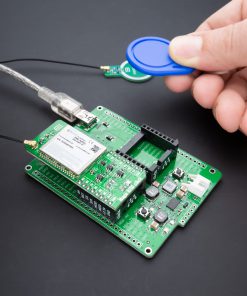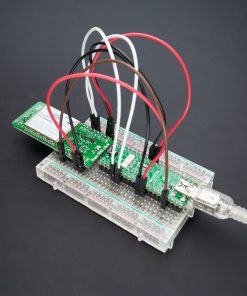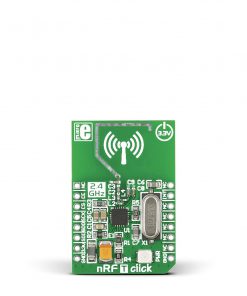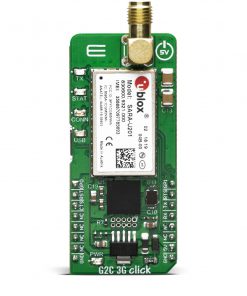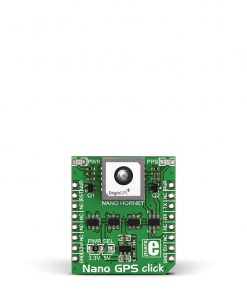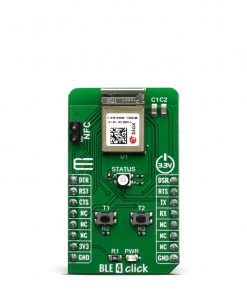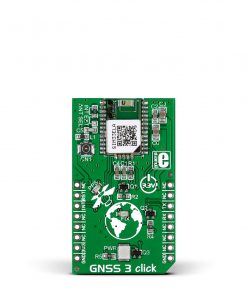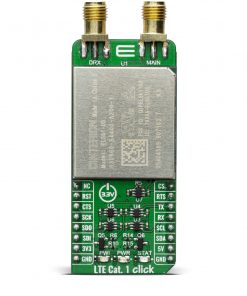Magic RFID Click
R5,900.00 ex. VAT
Magic RFID Click is a compact add-on board that contains an embedded RFID module. This board features the M6E-NANO, UHF RFID module with ultra-low power consumption from JADAK. Supporting the EPC Gen2V2 and ISO 18000-63 standard, the M6E-NANO module is available for global use. It operates in the Ultra High Frequency (UHF) band in a range from 859 up to 930MHz and can be used for write/read applications. This module provides an output power of +27 dBm, adjustable in 0.01 dB steps with a read speed of 200 tags/sec, meaning that with the appropriate antenna and the configuration of the module itself, greater distances can be achieved (up to 4.5m). This Click board™ is ideal for a wide range of applications in the logistics, security access points, manufacturing, tag commissioning stations, and more.
Magic RFID Click is supported by a mikroSDK compliant library, which includes functions that simplify software development. This Click board™ comes as a fully tested product, ready to be used on a system equipped with the mikroBUS™ socket.
Stock: Lead-time applicable.
| 5+ | R5,605.00 |
| 10+ | R5,457.50 |
| 15+ | R5,310.00 |
| 20+ | R5,162.50 |

